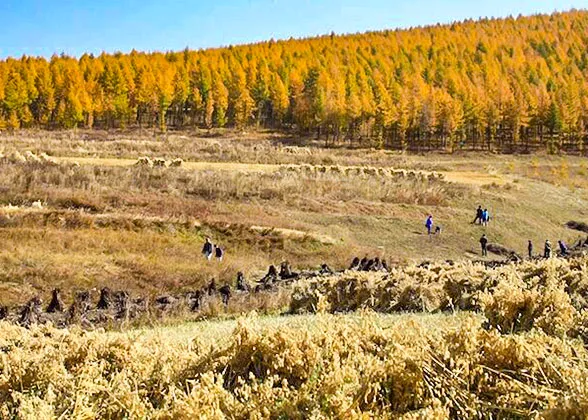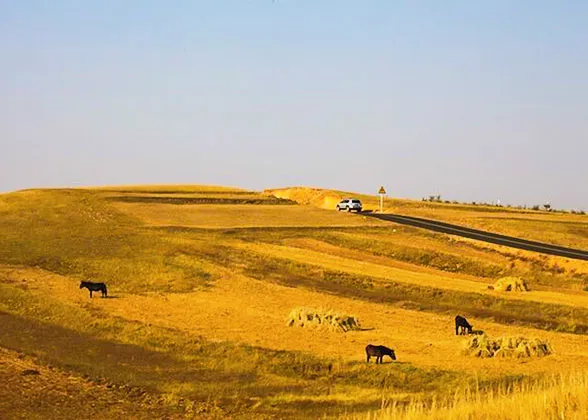Xinjiang Weather
What is the weather like in Xinjiang?
(1) There are huge temperature differences between different seasons, and between day and night;
(2) It is dry all year round with low rainfall;
(3) It enjoys long sunshine hours.
However, Xinjiang weather varies a lot across different regions due to its complex terrain. With the Tian Shan Mountains as the boundary, Xinjiang can be basically divided into southern and northern regions in terms of climatic differences. The southern part is drier with frequent dusty weather and even sandstorms, while the northern part sees lower temperature.
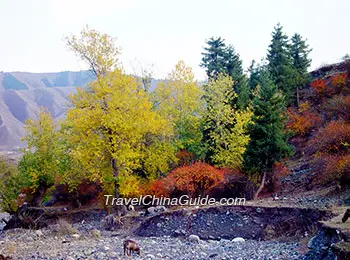 |
| Almost Always Sunny Xinjiang |
Temperature
Throughout the year, Xinjiang also has significant temperature variations. Generally, it endures cold winters and hot summers. Taking Urumqi, its capital as an example, January, the coldest month of the year, has an average temperature ranging from -18 to 8°C (0-46°F); while July, the hottest month of the year, sees an average temperature reaching 18 to 31°C (64-88°F).
The temperature difference between day and night is also extremely large. No matter when or where you go in Xinjiang, you are very likely to experience four seasons in a single day. Generally, the temperature difference in a day is over 12°C (22°F), and sometimes, it can even reach about 20°C (36°F).
Precipitation
It’s worth mentioning that the precipitation does vary across different regions: it is more in the north as mentioned above, and beyond this, it is also more frequent in mountainous areas than on the plains.
Humidity
 |
| Dry Xinjiang |
Daylight & Sunshine Hours
Sunshine hours are abundant, with an annual average of 2,600 to 3,400 hours. During the summer months, daily sunshine hours can reach approximately 10 to 11. When traveling in Xinjiang, you never need to worry about missing out on bright sunny days. Be aware that, with long sunshine hours and minimal cloud cover, UV rays in Xinjiang are almost always intense.
Annual Weather Facts of Major Cities
- High Temp: 28~30℃ (82~86℉)
- Low Temp: -20~-10℃ (-4~14℉)
- Humidity: 57%
- Rainfall: 460 mm
- Details of Urumqi Weather
- High Temp: 35~40℃ (95~104℉)
- Low Temp: -12~-6℃ (10~21℉)
- Humidity: 39%
- Rainfall: 15 mm
- Details of Turpan Weather
What is the best time to visit Xinjiang?
For most areas of northern Xinjiang, June to early October is the best time to visit. The temperature during this period is pleasant, and even in summer months from June to August, the daily high generally hovers around only 30°C (86°F). Additionally, the scenery is captivating. June to August is when grasslands like Nalati Grassland are at their greenest and most vibrant state. September to early October offers clear skies, crisp air, and the most beautiful autumn scenery. Note that Turpan and Hami are exceptions. These areas experience extreme heat from June to August; instead, the mild April, September, and October offer the best conditions for exploration.
 |
| Xinjiang Vibrant View from June to August |
For southern Xinjiang, April to May and September to October are the best times to visit. These periods offer the most favorable climate. In April to May, apricot blossoms bloom beneath the Pamir Plateau, presenting a unique spring view. From September to October, the poplar forests along the Tarim River basin turn brilliant golden.
Xinjiang Climate – Seasons & Travel Advice
Spring: April - May
![]() Weather: Spring brings gradually rising temperatures to Xinjiang. Generally, most areas in southern Xinjiang see average temperatures around 10-25°C (50-77°F), offering comfortable daytime and slightly chilly nighttime. Temperature in northern Xinjiang is typically lower. In early April, northern Xinjiang may see highs of only around 10°C (50°F) and lows around 0°C (32°F). However, in no more than two weeks, temperature in northern Xinjiang also becomes quite pleasant. In terms of precipitation, both southern and northern Xinjiang see monthly rainfall averaging less than 20 mm. While low rainfall ensures plenty of sunny days, it also leads to dusty weather.
Weather: Spring brings gradually rising temperatures to Xinjiang. Generally, most areas in southern Xinjiang see average temperatures around 10-25°C (50-77°F), offering comfortable daytime and slightly chilly nighttime. Temperature in northern Xinjiang is typically lower. In early April, northern Xinjiang may see highs of only around 10°C (50°F) and lows around 0°C (32°F). However, in no more than two weeks, temperature in northern Xinjiang also becomes quite pleasant. In terms of precipitation, both southern and northern Xinjiang see monthly rainfall averaging less than 20 mm. While low rainfall ensures plenty of sunny days, it also leads to dusty weather.![]() What to pack: shirts, hoodies, windproof jackets, thick sweatpants, and masks
What to pack: shirts, hoodies, windproof jackets, thick sweatpants, and masks![]() Travel Recommendations: In spring, it’s best to focus your travel in southern Xinjiang. If you do head to northern Xinjiang, consider Turpan, or the Ili River Valley with beautiful apricot flowers. These areas warm up earlier and offer more vibrant scenery. As for the high-altitude grasslands of northern Xinjiang, the grass is still mostly yellow. No matter where you go, be prepared for significant temperature swings between day and night.
Travel Recommendations: In spring, it’s best to focus your travel in southern Xinjiang. If you do head to northern Xinjiang, consider Turpan, or the Ili River Valley with beautiful apricot flowers. These areas warm up earlier and offer more vibrant scenery. As for the high-altitude grasslands of northern Xinjiang, the grass is still mostly yellow. No matter where you go, be prepared for significant temperature swings between day and night.
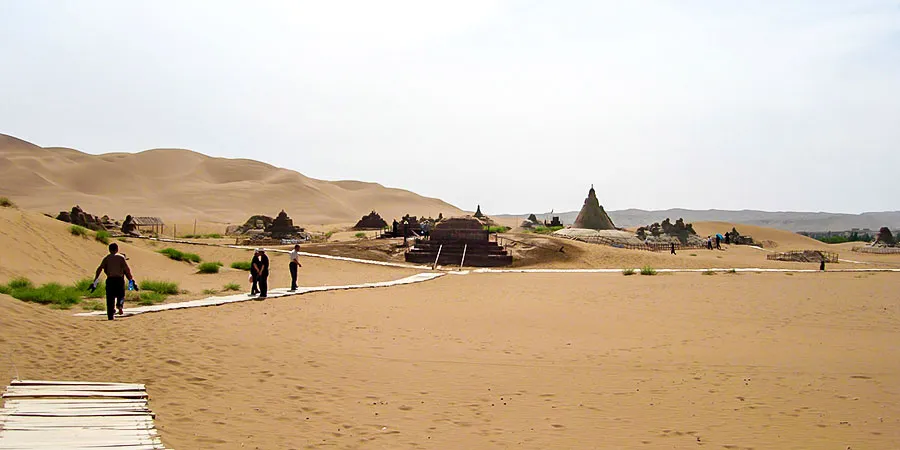 |
| Warm Kumtag Desert in Turpan in Spring |
Summer: June - August
![]() Weather: During summer, most areas in northern Xinjiang remain relatively cool and comfortable, while southern Xinjiang experiences intense heat. Take Altay in the north and Kashgar in the south as examples: the former sees an average temperature ranging from 9 - 25°C (48 - 77°F), while the latter experiences an average temperature of 16 - 32°C (61 - 90°F). This season brings the most precipitation of the year, though total rainfall remains low and has negligible impact on travel. It’s important to note that ultraviolet radiation is quite strong, making sun protection essential.
Weather: During summer, most areas in northern Xinjiang remain relatively cool and comfortable, while southern Xinjiang experiences intense heat. Take Altay in the north and Kashgar in the south as examples: the former sees an average temperature ranging from 9 - 25°C (48 - 77°F), while the latter experiences an average temperature of 16 - 32°C (61 - 90°F). This season brings the most precipitation of the year, though total rainfall remains low and has negligible impact on travel. It’s important to note that ultraviolet radiation is quite strong, making sun protection essential.![]() What to pack: T-shirts, shorts, dresses, sun-protection jackets, sunglasses, sun hats, sunscreen
What to pack: T-shirts, shorts, dresses, sun-protection jackets, sunglasses, sun hats, sunscreen![]() Travel Recommendations: Summer is the prime season for northern Xinjiang, and travelers are advised to head straight to the Tian Shan Mountains, Ili Grasslands, Sayram Lake, and Kanas Lake to escape the heat. For trips to hot southern Xinjiang, you are recommended to go out during early morning or evening hours to escape the heat. Turpan, where the temperature can reach 45°C (113°F) or higher, is not recommended in summer.
Travel Recommendations: Summer is the prime season for northern Xinjiang, and travelers are advised to head straight to the Tian Shan Mountains, Ili Grasslands, Sayram Lake, and Kanas Lake to escape the heat. For trips to hot southern Xinjiang, you are recommended to go out during early morning or evening hours to escape the heat. Turpan, where the temperature can reach 45°C (113°F) or higher, is not recommended in summer.
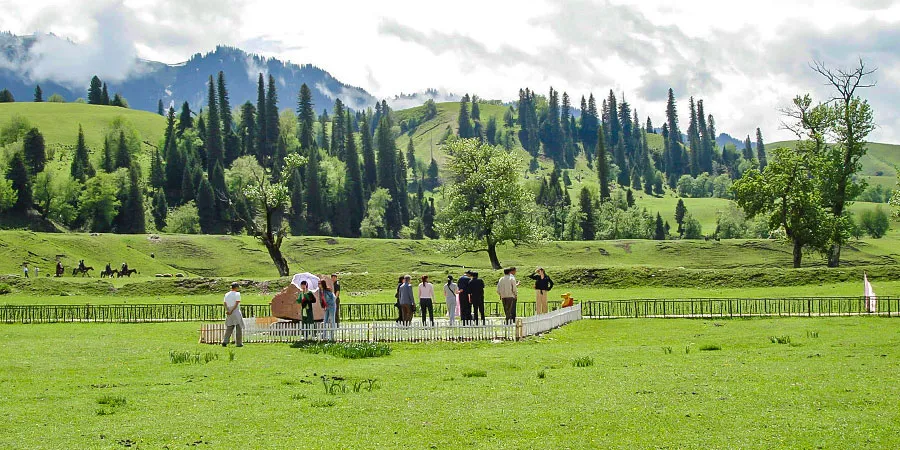 |
| Nalati Grassland in Summer |
Autumn: September - October
![]() Weather: Xinjiang in autumn is generally cool and comfortable with only a little rain. Besides, the southern part is more pleasant than the northern part. Specifically, the highest daily temperature in southern Xinjiang ranges from 20-30°C (68-86°F), while in northern Xinjiang it falls between 10-25°C (50-77°F). The lowest temperature is around 0-20°C (32-68°F) and -5-15°C (23-59°F), respectively. This means that by late autumn, nights in northern Xinjiang have already been cold. Whether traveling to southern or northern Xinjiang in autumn, you need to pack clothing of varying thicknesses, since the daily temperature fluctuations are particularly significant, sometimes reaching as much as 20°C (36°F).
Weather: Xinjiang in autumn is generally cool and comfortable with only a little rain. Besides, the southern part is more pleasant than the northern part. Specifically, the highest daily temperature in southern Xinjiang ranges from 20-30°C (68-86°F), while in northern Xinjiang it falls between 10-25°C (50-77°F). The lowest temperature is around 0-20°C (32-68°F) and -5-15°C (23-59°F), respectively. This means that by late autumn, nights in northern Xinjiang have already been cold. Whether traveling to southern or northern Xinjiang in autumn, you need to pack clothing of varying thicknesses, since the daily temperature fluctuations are particularly significant, sometimes reaching as much as 20°C (36°F).![]() What to pack: long-sleeved T-shirts, thin sweaters, 3-in-1 jackets, thick trousers, and long johns; down jackets for a northern Xinjiang trip in late October
What to pack: long-sleeved T-shirts, thin sweaters, 3-in-1 jackets, thick trousers, and long johns; down jackets for a northern Xinjiang trip in late October![]() Travel Recommendations: Both southern and northern Xinjiang have worth seeing autumn sceneries, but northern Xinjiang, with more plant covers, provides more choices for you. The best period for autumn landscapes is relatively short, lasting about 2-3 weeks from late September to early October in the north and from mid to late October in the south. So make plans in advance to avoid missing it. Additionally, early October coincides with a 7 or 8-day National Day holiday, so it’s advisable to avoid this time to steer clear of crowded tourist spots and inflated costs.
Travel Recommendations: Both southern and northern Xinjiang have worth seeing autumn sceneries, but northern Xinjiang, with more plant covers, provides more choices for you. The best period for autumn landscapes is relatively short, lasting about 2-3 weeks from late September to early October in the north and from mid to late October in the south. So make plans in advance to avoid missing it. Additionally, early October coincides with a 7 or 8-day National Day holiday, so it’s advisable to avoid this time to steer clear of crowded tourist spots and inflated costs.
|
|
Winter: November - March
![]() Weather: Winter in Xinjiang is pretty long, about 5 months. At this time of year, northern Xinjiang is bitterly cold: Altay, for example, gets an average temperature from -23°C (-9°F) to -2°C (28°F). In 2024, Altay recorded its coldest day at -30°C (-22°F). Southern Xinjiang experiences slightly higher temperatures. For instance, Kashgar’s average winter temperature fluctuates between -11°C (12°F) and 4°C (39°F). Snowfall occurs in Xinjiang during winter, though it is primarily concentrated in high-altitude areas.
Weather: Winter in Xinjiang is pretty long, about 5 months. At this time of year, northern Xinjiang is bitterly cold: Altay, for example, gets an average temperature from -23°C (-9°F) to -2°C (28°F). In 2024, Altay recorded its coldest day at -30°C (-22°F). Southern Xinjiang experiences slightly higher temperatures. For instance, Kashgar’s average winter temperature fluctuates between -11°C (12°F) and 4°C (39°F). Snowfall occurs in Xinjiang during winter, though it is primarily concentrated in high-altitude areas.![]() What to pack: thermal underwear, sweaters, thick down coats, winter pants, snow boots, hats, and scarves
What to pack: thermal underwear, sweaters, thick down coats, winter pants, snow boots, hats, and scarves![]() Travel Recommendations: Heavenly Lake of Tianshan near Urumqi and Hemu Village in Altay are wonderful places to enjoy the snow and top winter destinations of Xinjiang. However, be sure to wear quite thick and warm clothes to keep warm. Besides, note that during snowy weather, roads may be closed in some areas, potentially affecting your travel plans, so it is essential to monitor weather forecasts at all times.
Travel Recommendations: Heavenly Lake of Tianshan near Urumqi and Hemu Village in Altay are wonderful places to enjoy the snow and top winter destinations of Xinjiang. However, be sure to wear quite thick and warm clothes to keep warm. Besides, note that during snowy weather, roads may be closed in some areas, potentially affecting your travel plans, so it is essential to monitor weather forecasts at all times.
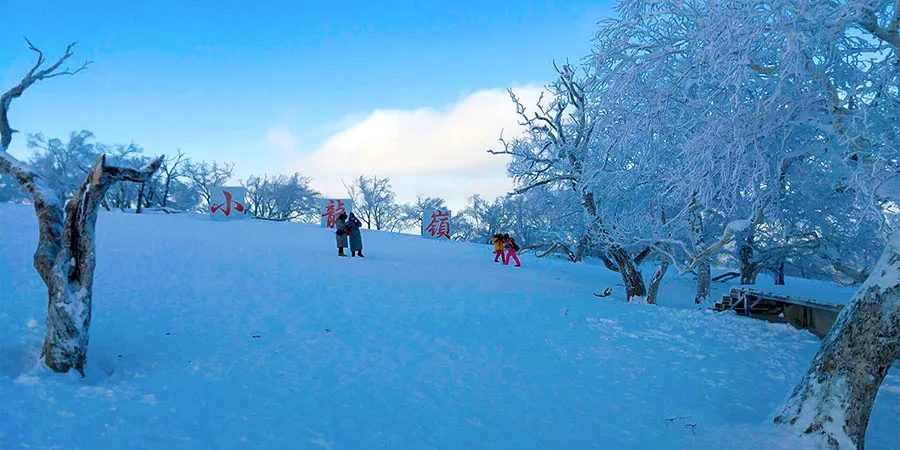 |
| Snow View of Xinjiang |
